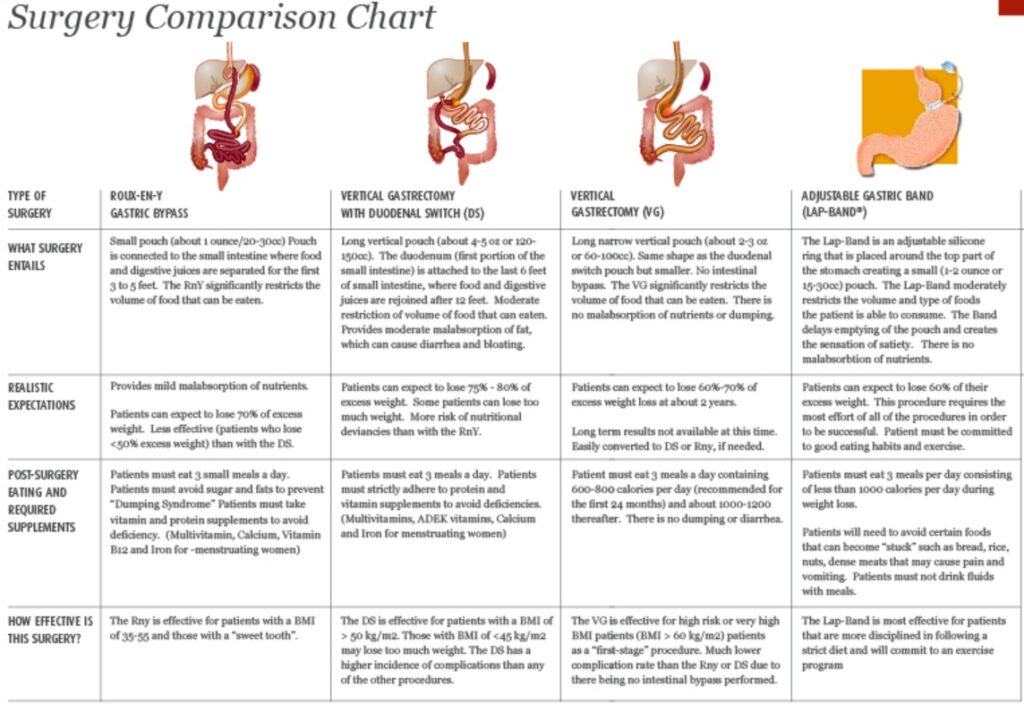Types of Bariatric Surgery
What are the different types of bariatric surgery?
There are several different types of bariatric surgery, or surgery done on the stomach and/or intestines to alter the normal digestive process, which in turn helps people lose weight. Each of the various types of bariatric surgery has its own advantages and disadvantages. The two most frequently done types of bariatric surgery are the Gastric Bypass and the Lap-Band surgery.
Here is a list of the most common types of bariatric surgery:
In Gastric Bypass surgery, part of the stomach is stapled and becomes unusable. Then the smaller portion of the stomach is connected to the intestine. Because their stomachs have a smaller capacity for food, patients who have a gastric bypass will not be inclined to eat as much as they did prior to their surgery; when they do eat, they feel full much sooner than previously.
The Adjustable Gastric Band, also known as the Lap-Band, is actually a band that is surgically inserted around the top part of the stomach to create a small pouch in the upper stomach. This procedure decreases the stomach’s capacity to take in food, and also reduces the patient’s desire for food.
Vertical Banded Gastroplasty (VBG) is like other types of bariatric surgery, in that is separates the stomach into two parts, producing a smaller stomach area within the larger stomach. This procedure also restricts the food intake of the patient. Vertical Banded Gastroplasty also uses staples to make a “smaller stomach” in the upper part of the stomach.
The Fobi-Pouch is very similar to the gastric bypass surgery. This procedure is typically done on overweight patients who have had the vertical banded gastroplasty but have not lost a sufficient amount of weight.
The Roux-en-Y Gastric Bypass is a form of gastric bypass surgery that separates the stomach into two parts. A smaller stomach pouch is created and connected to the intestine. Because a large part of the stomach is bypassed, food intake and fat absorption are both significantly reduced. The “Y” refers to the shape of the connection made with the stomach and intestines in this type of surgery.

Now that you’ve read this overview of the most common types of bariatric surgery, you can use this information to get a better idea of which surgery would be right for you, and then do further research on the procedures that seem most suitable. It’s important that you research any surgical procedure you are considering, and talk to your doctor about the pros and cons of each different surgery.
So now, if you tell somebody you plan to have a bariatric procedure and they ask, “What is bariatric surgery?” … you’ll know exactly what to tell them!








